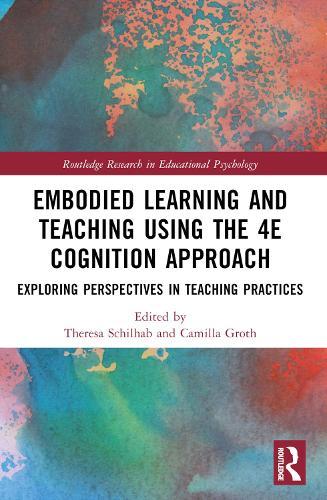Overview
This book operationalises the new field—EmLearning—that integrates embodiment and grounded cognition perspectives with education using the 4E approach as a guiding principle, which suggests that cognition is embodied, embedded, enacted, or extended. Chapters highlight empirical data, providing readers with research-based insight into the theoretical foundations of embodied cognition in learning, illustrated by practical examples. Ultimately, the volume contributes a radical understanding of embodied cognition, demonstrating the importance of the field to the educational system more broadly and suggesting a fundamental change to the way learning, education, and curriculum design are viewed and considered. Based on contemporary scientific findings, the book addresses the educational area with a focus on opening the embodied approach to a wider audience that will circulate the new knowledge and support their educational practices. Written with the purpose of contributing to a broad spectrum of academic educational fields, this book will be of use to postgraduates, researchers, and academics in the fields of higher education, educational psychology, teacher education, and teaching methodology and practice. Teachers and school politicians should also benefit from this volume more broadly. The Open Access version of this book, available at www.taylorfrancis.com, has been made available under a Creative Commons Attribution-Non Commercial-No Derivatives (CC-BY-NC-ND) 4.0 license.
Full Product Details
Author: Theresa Schilhab (Aarhus University, Denmark) ,
Camilla Groth (University of South-Eastern Norway)
Publisher: Taylor & Francis Ltd
Imprint: Routledge
ISBN: 9781032377322
ISBN 10: 1032377321
Pages: 198
Publication Date: 29 September 2025
Audience:
College/higher education
,
Tertiary & Higher Education
Format: Paperback
Publisher's Status: Forthcoming
Availability: Not yet available

This item is yet to be released. You can pre-order this item and we will dispatch it to you upon its release.
Reviews
""Overall, I consider the book to make an excellent contribution to 4E cognition-inspired research on learning and teaching at various levels and areas of education. The chapters apply the 4E cognition framework insightfully in their respective contexts. I enjoyed reading the chapters very much and felt that many of them make an outstanding contribution to the field."" - Professor Kai Hakkarainen, Department of Education, University of Helsinki, Finland. ""Overall, I consider the book to make an excellent contribution to 4E cognition-inspired research on learning and teaching at various levels and areas of education. The chapters apply the 4E cognition framework insightfully in their respective contexts. I enjoyed reading the chapters very much and felt that many of them make an outstanding contribution to the field."" - Professor Kai Hakkarainen, Department of Education, University of Helsinki, Finland.
Author Information
Theresa Schilhab is Associate Professor in Educational Neuroscience and Evolutionary Epistemology and leads Science Didactics and Nature Views, Danish School of Education, Aarhus University, Denmark. Camilla Groth is Associate Professor in Arts, Design, and Crafts and leads the Embodied Making and Learning Research group (EMAL), University of South-Eastern Norway.



